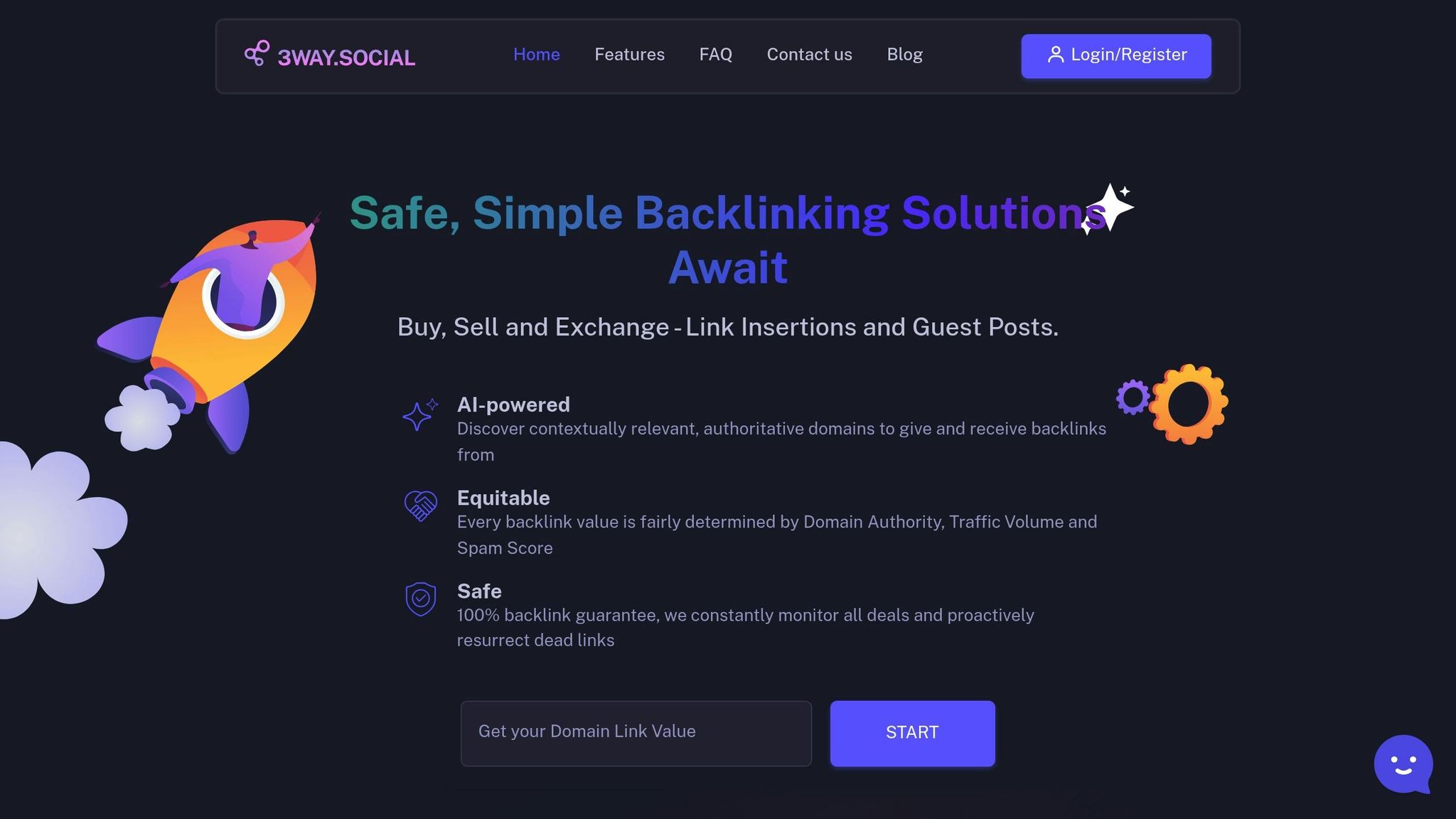Last Updated on December 22, 2025 by Becky Halls
Long-tail keywords are search phrases with three or more words that target specific user intents. Unlike broad, high-competition short-tail keywords, long-tail terms help businesses attract highly relevant traffic, improve search rankings, and boost conversions. They’re particularly useful for addressing niche queries and aligning content with user needs.
Key Takeaways:
- Higher Conversion Rates: Long-tail queries like “best waterproof running shoes under $150” often indicate purchase intent, leading to better conversions.
- Lower Competition: Specific phrases face less competition, making it easier to rank and drive targeted traffic.
- Cost-Effective SEO: They require fewer resources to rank organically and are cheaper in paid campaigns.
- Intent-Focused Content: Align keywords with user intent (informational, commercial, transactional, or navigational) to guide users through the buyer’s journey.
- Tools to Find Keywords: Use Google Autocomplete, Search Console, or platforms like AnswerThePublic to identify long-tail opportunities.
- Content Clusters for SEO: Organize content around long-tail keywords to establish authority and improve internal linking.
Quick Example:
A general search like "shoes" attracts a wide audience but lacks intent. In contrast, "waterproof hiking boots for wide feet under $200" targets users ready to buy, driving better results for your business.
How to Drive Targeted Traffic with Long Tail Keywords
Main Benefits of Long-Tail Keywords for SEO
Long-tail keywords bring a range of advantages to any SEO strategy. They don’t just help attract traffic – they’re also key to improving rankings, boosting conversions, and using resources more efficiently. These benefits make them an essential tool for turning search intent into actionable results.
Better Conversion Rates Through Intent Matching
Long-tail keywords are highly specific, which means they align closely with what users are searching for. For instance, someone searching for "organic cotton baby onesies size 6 months" is likely ready to make a purchase rather than just browsing. By addressing such precise needs, your content can guide users toward taking action.
Terms like "best", "reviews", or "near me" in search queries often indicate a high level of intent, making it easier to convert those users into customers.
Less Competition and Lower Keyword Difficulty
One of the standout benefits of long-tail keywords is the reduced competition they face compared to more general, short-tail terms. For example, while countless websites target a broad keyword like "shoes", far fewer focus on something as specific as "waterproof hiking boots for wide feet under $200." This lower competition increases your chances of ranking on the first page and speeds up your ability to achieve organic growth.
In contrast to head keywords, which often require significant time, effort, and backlinks to rank, long-tail keywords offer a quicker path to visibility.
Cost-Effective SEO Campaigns
Long-tail keywords are a smart choice for both organic and paid SEO efforts because they deliver strong results without breaking the bank. Their lower competition often means reduced costs while still drawing in highly relevant traffic. In organic SEO, targeting long-tail keywords can cut down on the need for extensive link-building or large-scale content production, allowing you to achieve meaningful rankings with focused, high-quality content.
For paid campaigns, long-tail keywords usually have lower cost-per-click rates, which makes them a budget-friendly option that still delivers excellent ROI. Plus, their specificity simplifies content creation and aligns perfectly with your overall SEO strategy. By centering your efforts around long-tail keywords, you create a solid foundation for targeted link-building and sustainable growth.
How to Find Effective Long-Tail Keywords
Building on the advantages of long-tail keywords, finding them requires a mix of targeted research and a deep understanding of your audience. It’s not just about using keyword tools – it’s about thinking like your audience and understanding how they search for solutions in your industry.
Keyword Research Tools and Methods
Google’s built-in features are a goldmine for uncovering long-tail keywords. Start with Google Autocomplete, which suggests real-time search queries as you type. For instance, typing "email marketing" might bring up suggestions like "email marketing automation for small businesses" or "email marketing templates for nonprofits." These suggestions reflect what people are actively searching for.
The "People Also Ask" section is another fantastic resource. It highlights real user questions, often written in natural language. Clicking on one question expands a list of related queries, giving you even more keyword ideas to explore.
AnswerThePublic is another powerful tool, organizing search queries into categories like "how", "what", "where", and "why." This method helps you uncover specific questions and challenges your audience is trying to solve, leading to high-intent keywords.
Your Search Console data can also reveal hidden opportunities. Look for long-tail keywords already driving traffic but ranking on the second or third page of search results. These are often low-hanging fruit – small optimizations could push them to the first page.
Marketing Funnel Framework for Keywords
Aligning long-tail keywords with the marketing funnel ensures you address users at every stage of their journey. This approach enables you to create content that guides prospects from awareness to decision-making.
Top-of-Funnel (TOFU) keywords are for users just beginning to explore their problem or need. These often include phrases like "what is", "how to", or "guide to." For example, "what is conversion rate optimization for ecommerce" targets someone in the research phase. Such keywords attract traffic but don’t usually lead directly to conversions.
Middle-of-Funnel (MOFU) keywords focus on users who are evaluating solutions. These keywords might include comparison terms, features, or specific categories, such as "best email marketing software for restaurants" or "CRM with advanced reporting features." MOFU keywords bring in more qualified traffic with clearer buying intent.
Bottom-of-Funnel (BOFU) keywords target users ready to act. These terms often include action words like "buy", "trial", or "pricing", as well as brand names. For instance, "Mailchimp vs Constant Contact pricing comparison" or "HubSpot free trial signup" are BOFU keywords that convert at higher rates despite lower search volumes.
Using this funnel-based strategy helps you refine your keyword choices and align them with specific user needs.
Understanding User Intent for Keyword Selection
Classifying keywords by user intent adds another layer of precision to your strategy. This understanding not only shapes your content but also improves your chances of ranking effectively.
Informational intent refers to users searching for knowledge or solutions. These keywords often include questions or phrases like "how to optimize website speed for mobile users" or "guide to social media marketing for lawyers." Content targeting these searches should focus on being helpful and educational.
Commercial investigation intent captures users researching their options before making a purchase. Keywords here often include comparison terms, reviews, or phrases like "best project management tools for remote teams 2025" or "Shopify vs WooCommerce for dropshipping business." Content for this intent should help users evaluate options while subtly highlighting your solution.
Transactional intent reflects users ready to take action, such as buying a product or signing up for a service. Examples include "buy organic dog food online free shipping" or "download free social media calendar template." These keywords typically lead to conversions but can face stiff competition.
Navigational intent applies to users searching for specific brands, products, or websites. For example, "Nike Air Max 270 women’s size 8 black" or "Salesforce login customer portal." While not every business will benefit from this intent type, it’s valuable if your product or service is well-known.
The most successful long-tail keyword strategies balance all four intent types, ensuring you reach users no matter where they are in their search process. By focusing on the challenges your audience faces and the words they use to describe them, you’ll uncover valuable keywords that can form the foundation for optimized content clusters.
sbb-itb-88880ed
Long-Tail Keywords in Link-Building Strategies
Long-tail keywords play a key role in link-building campaigns. They help craft natural anchor text, support the creation of interconnected content, and enable precise, targeted outreach. By incorporating these keywords strategically, you can enhance both your link-building efforts and content structure.
Anchor Text Optimization with Long-Tail Keywords
Using long-tail keywords in anchor text creates a more natural and varied link profile, something search engines prefer. Instead of relying on generic terms like "SEO services" or "digital marketing", long-tail phrases add context and reduce the risk of over-optimization penalties.
For example, instead of repeating a single phrase, you could use variations such as "project management software for remote teams", "collaboration tools for distributed workforces", or "task management platforms with time tracking features." These variations target different search queries while staying relevant to your main topic.
Another advantage is improving user experience. When someone clicks a link like "email marketing automation for small businesses", they know exactly what content to expect. This alignment not only meets user expectations but also helps reduce bounce rates and boosts engagement metrics.
A well-rounded anchor text strategy involves mixing different types of anchors. This might include exact-match phrases, partial-match long-tail keywords, branded terms, and even generic phrases like "click here" or "learn more." Such diversity helps search engines understand your content’s broader context, signaling authority on the topic. When multiple websites link to your page using related long-tail phrases, it reinforces your expertise and comprehensive coverage of the subject.
Building Content Clusters Around Long-Tail Keywords
Organizing content around long-tail keywords doesn’t just improve your SEO – it opens up new link-building opportunities. By creating tightly connected content clusters, you can establish yourself as a go-to resource on specific topics while offering multiple linking points for outreach.
A pillar page strategy works particularly well here. For instance, your main pillar page might cover a broad topic like "content marketing", while supporting cluster pages delve into more specific long-tail variations, such as "content marketing strategies for B2B SaaS companies", "measuring content marketing ROI for small businesses", or "tools for automating content marketing in agencies." These cluster pages attract links from various sources and strengthen your overall authority on the subject.
Internal linking among cluster pages is another key benefit. Not only does it distribute link equity across your site, but it also keeps users engaged by guiding them to content that’s directly relevant to their interests.
Content clusters also make outreach more effective. Instead of promoting a single generic page, you can pitch niche cluster pages tailored to specific audiences. For example, a page about "email marketing for nonprofit organizations" is more likely to resonate with specialized publications than a general guide on email marketing.
Using 3Way.Social for Targeted Link Building

Platforms like 3Way.Social take the benefits of content clusters and targeted link-building to the next level. By combining long-tail keyword strategies with advanced tools, you can streamline your SEO efforts for maximum impact.
One standout feature of 3Way.Social is its AI-driven domain matching. This tool identifies websites that align with your long-tail keyword goals. For example, if you’re focusing on "project management software for construction companies", the platform can connect you with sites that cover construction technology, business software reviews, or industry-specific workflows.
The platform also helps maintain natural anchor text patterns. Its quality control filters ensure that links remain organic and avoid over-optimization risks. For instance, in ABC link exchanges, all parties can coordinate their anchor text strategies to support each other’s long-tail keyword goals while keeping links natural and relevant.
Guest posting becomes even more effective when centered around long-tail keywords. By pitching content ideas that directly address specific queries – such as "how to choose project management software for remote construction teams" – you increase your chances of securing placements with the right publications.
Additionally, 3Way.Social simplifies campaign management. Its secure payment integration and dashboard allow you to track which long-tail keywords are receiving link support, identify gaps in your anchor text strategy, and coordinate with partners to ensure thorough keyword coverage.
Finally, the platform’s focus on permanent do-follow links adds lasting value to your SEO strategy. Unlike temporary placements, these links continue to support your rankings over time, making them a worthwhile investment in your long-term success.
Measuring Long-Tail Keyword Strategy Results
When evaluating the success of a long-tail keyword strategy, focus on more than just traffic numbers. The real measure lies in how effectively these visitors engage with your content and convert into customers.
Key Performance Indicators (KPIs) to Track
To gauge the success of your long-tail campaigns, pay attention to metrics that highlight intent alignment and conversion quality. Start by using Google Analytics to segment your organic traffic. Separate sessions based on query length – 1-3 word queries versus those with 4+ words. This helps you understand how long-tail traffic behaves compared to short-tail.
- Organic sessions from longer queries: These are your primary volume metric. Use custom segments to group long-tail queries by landing page and track them weekly. This will show which content clusters attract the most qualified traffic.
- Conversion rates: Long-tail queries often convert at much higher rates – around mid-30%, compared to the typical landing page benchmark of about 11%. If your long-tail pages aren’t hitting these levels, it could mean your content isn’t aligned with user intent.
- Ranking distribution: For long-tail keywords, focus on ranking within the top 3-5 positions, as these account for 69% of clicks. It’s less about absolute ranking and more about being visible where it counts.
- Click-through rates (CTR): Higher intent queries should naturally result in stronger CTRs. Monitor this in Google Search Console to ensure your titles and meta descriptions align with user expectations.
- Assisted conversions and first-click attribution: Long-tail pages often act as entry points in a multi-touch journey. A user might find your site through a specific query, then return later to convert via a branded search. Tracking these patterns helps reveal the full impact of your long-tail content.
These KPIs provide the foundation for comparing long-tail and short-tail strategies.
Long-Tail vs. Short-Tail Keyword Strategy Comparison
Both long-tail and short-tail keywords serve different purposes, and understanding their trade-offs is key to optimizing your efforts. Here’s a quick breakdown:
| Aspect | Long-Tail Keywords | Short-Tail Keywords |
|---|---|---|
| Competition Level | Low to medium | High |
| Search Volume | Low per term, high in aggregate | High per individual term |
| Conversion Rate | Higher (mid-30% range) | Lower (broad intent) |
| Time to Rank | Faster (weeks to months) | Slower (months to years) |
| Content Approach | Specific, intent-matched pages | Broad, pillar-focused content |
| Cost Efficiency | Less expensive due to lower competition | More costly and resource-intensive |
| Traffic Quality | High intent, better engagement | Mixed intent, variable quality |
| Measurement Focus | Conversions, revenue per session | Brand visibility, total traffic |
Long-tail keywords collectively account for about 70% of search traffic while facing far less competition. This makes them an excellent choice for businesses looking to achieve measurable results quickly. While individual long-tail terms may bring smaller traffic volumes, their combined impact often surpasses what short-tail keywords can deliver. To measure success, focus on metrics like revenue per session and cost per acquisition, rather than just traffic volume.
Measuring Link-Building Success with 3Way.Social
Once you’ve established your long-tail keyword strategy, evaluating the effectiveness of your link-building efforts becomes crucial. Platforms like 3Way.Social can help you track metrics that are often overlooked in traditional campaigns, ensuring your links deliver measurable results.
- Domain relevance and authority: 3Way.Social uses AI to match your keywords with topically relevant sites. Track the authority scores of linking domains and document their relevance to your long-tail keyword clusters.
- Anchor text alignment: Monitor the distribution of exact-match, partial-match, and branded anchor texts. Over-optimization can hurt rankings, so ensure no single phrase dominates your anchor profile.
- Ranking velocity: Measure how quickly your long-tail pages climb the rankings after link acquisition. Establish baseline rankings before launching a campaign and monitor position changes over 2-8 weeks. The platform’s focus on permanent do-follow links ensures sustained improvements.
- Traffic attribution: Tag your long-tail landing pages in analytics to track increases in organic sessions after link placements. Look at both direct referral traffic and improved visibility for your keywords.
- Link diversification metrics: A natural backlink profile is key to long-term success. Use 3Way.Social’s features to spread links across multiple domains and industries. Track the variety in referring domains, anchor text, and link placements to maintain a resilient profile.
To measure ROI, calculate metrics like cost per quality link and revenue lift per link. Platforms like 3Way.Social make this easier with transparent pricing and secure payment integration. The permanent nature of the links ensures they continue to deliver value long after the campaign ends, supporting your long-tail rankings for months or even years. This sustained impact makes targeted link-building a powerful addition to your long-tail keyword strategy.
Conclusion: Growing Organic Traffic Through Long-Tail Keywords
Long-tail keywords open up a world of opportunities in today’s SEO landscape. While many marketers focus on high-volume, broad search terms, the real growth lies in catering to specific, intent-driven queries.
These keywords not only help you rank faster but also drive better conversion rates by addressing precise user needs. For instance, targeting a phrase like "best project management software for remote teams under $50" speaks directly to users who are ready to make a purchase or take action.
By combining long-tail keyword strategies with focused link-building efforts, you can amplify your SEO results. The key is to align your content with user intent at every stage of the buyer’s journey. Whether someone is in the early research phase or ready to make a decision, long-tail keywords allow you to meet them where they are with content that resonates.
Tools like 3Way.Social can assist in building a strong backlink profile to support your long-tail content. Their AI-powered domain matching ensures your links come from relevant, topic-aligned sites, while their emphasis on do-follow links adds lasting SEO benefits.
To ensure long-term success, it’s essential to measure results with metrics like revenue per session and conversion quality. Monitoring how your long-tail pages perform – whether through assisted conversions or multi-touch attribution – provides valuable insights for refining your strategy over time.
When you focus on keyword intent, create well-structured content clusters, and build high-quality backlinks, long-tail keywords can give you a real edge over competitors chasing expensive, short-tail terms. The combined impact of ranking for multiple long-tail phrases can drive highly qualified traffic and deliver organic growth that outpaces reliance on a single high-volume keyword.
FAQs
How can businesses find and choose the best long-tail keywords for their niche?
To find the best long-tail keywords, start with thorough keyword research. Tools like Google Keyword Planner or other SEO software can help you uncover low-competition phrases that match what your audience is searching for. You can also check Google’s autocomplete suggestions, study competitors’ content, and dig into your internal site search data for additional ideas.
Look for keywords that are closely related to your content, have a decent search volume, and are likely to lead to conversions. By focusing on these criteria, you’ll attract more targeted traffic and boost your organic growth.
How can long-tail keywords be naturally added to existing content without affecting readability?
To integrate long-tail keywords into your content effectively, weave them naturally into titles, headings, and body text where they fit seamlessly with the context. The key is to ensure these keywords blend into the narrative without feeling out of place or disrupting the flow.
Another strategy is to group related long-tail keywords into clusters that align with search intent. This approach helps you refine or expand sections of your content to address specific user needs while keeping the reading experience smooth and engaging. Always prioritize delivering useful, relevant information so the keywords enhance both SEO performance and reader satisfaction.
How do long-tail keywords help boost SEO and build a stronger backlink profile over time?
Long-tail keywords are a game-changer when it comes to improving SEO and strengthening your backlink strategy. These more specific, less competitive search terms help you attract targeted traffic, making it easier to reach niche audiences and build credibility in your field.
When you create meaningful content focused on long-tail keywords, you open the door to earning natural, high-quality backlinks from websites in your niche. This not only boosts your domain authority but also signals to search engines that your site is trustworthy and relevant. The result? Better rankings and a steady increase in organic traffic.



